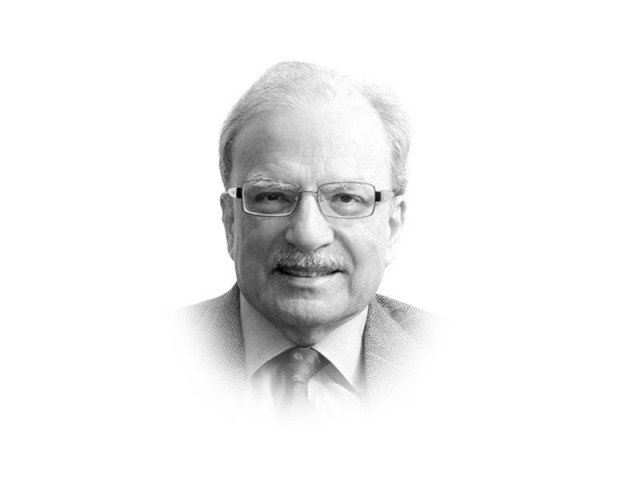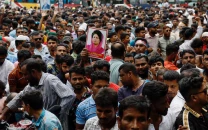Punjab as a driver for Pakistan’s growth
The government will need to bring about a major change in its development priorities

The writer is a former caretaker finance minister and has served as vice-president of the World Bank
Following the lecture the government asked me to prepare a policy paper, outlining the actions the government needed to take to achieve the rate of growth I had said was within the reach of the province. This was done by the policy institute I was then engaged in establishing in Lahore. That institute, now called the Burki Institute of Public Policy (BIPP), is fully functional. It produces an annual report in which we analyse the state of the economy as well as one subject we believe should be of interest to those who hold the reins of power in both Islamabad as well as in Lahore, Punjab’s provincial capital. Among the subjects we have covered is an analysis of the reasons behind the relative backwardness of the southern districts of Punjab; the damage caused to the economy by the severe shortage of electric power; and the rise of extremist politics attended by terrorist attacks.
In the BIPP’s Punjab report we presented a policy matrix we believed the government could adopt to accelerate the rate of growth of the economy as well as bring about social improvement. We adopted some of the thinking espoused by the Boston-based economists Daron Acemoglu and James Robertson in their well-received book, Why Nations Fail. Their main thesis was that there is a close relationship between the way economic and political systems evolve. It requires an inclusive economic system to develop inclusive politics. By “inclusive” they meant systems that work for all segments of the population and all regions of the country. Opposite to these were “exclusive” systems that rewarded only narrow segments of the population and a few well-connected regions. Soon after our report was done, there was a change of administration in Lahore following the elections of 2013. The report was shelved.
It is very gratifying that some of what we said in our report has been picked up in a document issued recently by the Government of Punjab under the title of Punjab Spatial Strategy, 2047. The time span covered by the PSS ends when Pakistan would be celebrating its 100th birthday. The subtitle to the report — “A framework for integrated spatial planning and sustainable development” — describes well the material covered.
This is a handsomely produced document; it also adopts an approach that is not common in the literature on economic and social development. The report’s aim is “to ensure integrated spatial planning for transforming Punjab into an economically developed and sustainable region by adding a spatial dimension to the development and planning process.” It identifies potential growth corridors and nodes around which to prioritise and coordinate investments.
The connectivity it envisages runs vertically as well as horizontally; the plan is not only to ensure that there are linkages between different layers of government but also between different geographic regions. Punjab’s southern districts have been left behind since they are not well connected with the more developed parts of the province. Also, to ensure that the development process is “inclusive” the government should be brought closer to the people. Punjab is too large a province to be run from Lahore; to be run even from divisional headquarters. Institutional devices have to be found that would connect local people and localities to governments at higher levels.
There are two features of the PSS that needs mention. One, it identifies the China-Pakistan Economic Corridor investment programme as the one with the potential of connecting Pakistan’s various regions with one another. The more rapidly advancing regions would be able to pull in those that have been left behind. CPEC would benefit in particular Balochistan and the backward districts of the provinces of Punjab and Sindh.
The second important feature of the strategy is the importance it gives to modern services in moving forward the provincial economy and making it inclusive. Some of the latest data from the State Bank of Pakistan is revealing. It shows that the recent downturn in the economy was the result of the poor performance of the sectors of agriculture and manufacturing. On the other hand, the service sector continued to perform well. The SBP data does not distinguish between old and modern services. Retail trade is by far the most important part of conventional services. Whenever I visit Pakistan, I am struck by the number of small shops located in close proximity, selling the same goods or services. Their productivity must be low. On the other hand, modern services such as information technology, communications, health, education and finance have a much higher productivity and also the potential to increase the rate of inclusive growth. But to realise their potential would need investment in improving the province’s large human resource.
To achieve this, the government will need to bring about a major change in its development priorities. As the LSS points out, much of the province’s human resource lacks training in contemporary skills. Only 5.6% of the population has received tertiary education, with only 0.5% with any kind of technical education. The LSS has ambitious targets. It hopes to increase the proportion of the population with tertiary education to 10% by 2027, 15% by 2037 and 30% by 2047. Under the plan, population with technical education will increase ten-fold, to 5% by 2027, to 8% by 2037 and to 10% by 2047. The realisation of these ambitious targets would transform the provincial economy and society. However, for that to be done, the government will have to work with the private sector.
Published in The Express Tribune, November 4th, 2019.
Like Opinion & Editorial on Facebook, follow @ETOpEd on Twitter to receive all updates on all our daily pieces.











1726134115-0/BeFunk_-(41)1726134115-0-208x130.webp)




COMMENTS
Comments are moderated and generally will be posted if they are on-topic and not abusive.
For more information, please see our Comments FAQ